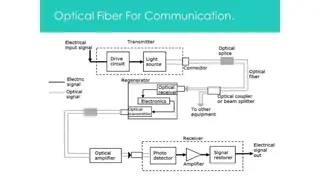Understanding Solutions and Concentration in Chemistry
Explore the concepts of solutions, solutes, solvents, concentration, and molarity through engaging activities like the "Bearly Alive" experiment and discussions on saturated solutions. Learn to define and calculate molarity, and understand how compounds behave in solution. Get ready for hands-on lab work in groups to further your understanding of solution chemistry.
Download Presentation

Please find below an Image/Link to download the presentation.
The content on the website is provided AS IS for your information and personal use only. It may not be sold, licensed, or shared on other websites without obtaining consent from the author. Download presentation by click this link. If you encounter any issues during the download, it is possible that the publisher has removed the file from their server.
E N D
Presentation Transcript
Living By Chemistry SECOND EDITION Unit 4: TOXINS Stoichiometry, Solution Chemistry, and Acids and Bases
Lesson 80: Bearly Alive Solution Concentration
ChemCatalyst Five gummy bears have been placed overnight in five different aqueous sugar solutions. Each solution contains a different amount of dissolved sugar. a. Which solution do you think has the greatest amount of sugar in it? Explain your reasoning. b. What do you think caused the bears to change size?
Key Question How can you keep track of compounds when they are in solution?
You will be able to: define the terms solution, saturated solution, solute, and solvent explain what the concentration and molarity of a solution represent complete calculations involving molarity
Prepare for the Lab Work in groups of four. Solution: A mixture of two substances that is uniform throughout.
Discussion Notes A solution is a mixture of two or more substances that is uniform throughout. Solute: The substance dissolved in a solution. Solvent: The substance in which the solute dissolves in a solution.
Discussion Notes (cont.) A solution is saturated when no more solute will dissolve. Saturated solution: A solution that contains the maximum amount of solute for a given amount of solvent.
Discussion Notes (cont.) Concentration refers to the amount of solute that is dissolved in a solution. n (moles) Molarity (M) = V (liters of solution) Concentration: A measure of the amount of solute dissolved in a specified volume of solution.
Discussion Notes (cont.) Molarity: The concentration of a solution expressed in moles of solute per liter of solution.
Discussion Notes (cont.) The gummy bears changed size depending on the concentration of the solution they were soaked in. Molecules move from areas of higher concentration to areas of lower concentration.
Wrap Up How can you keep track of compounds when they are in solution? When two or more substances mix together uniformly at a molecular, ionic, or atomic level, they form a solution. The concentration of a solution can be expressed in moles per liter. This is also called the molarity of the solution, or M. The concentration of a solution can also be expressed in moles per kilogram. This is called the molarity of the solution, or m.
Check-In Suppose 10.0 g of salt, NaCl, are dissolved in 0.50 L of water. What is the molarity of this solution?























